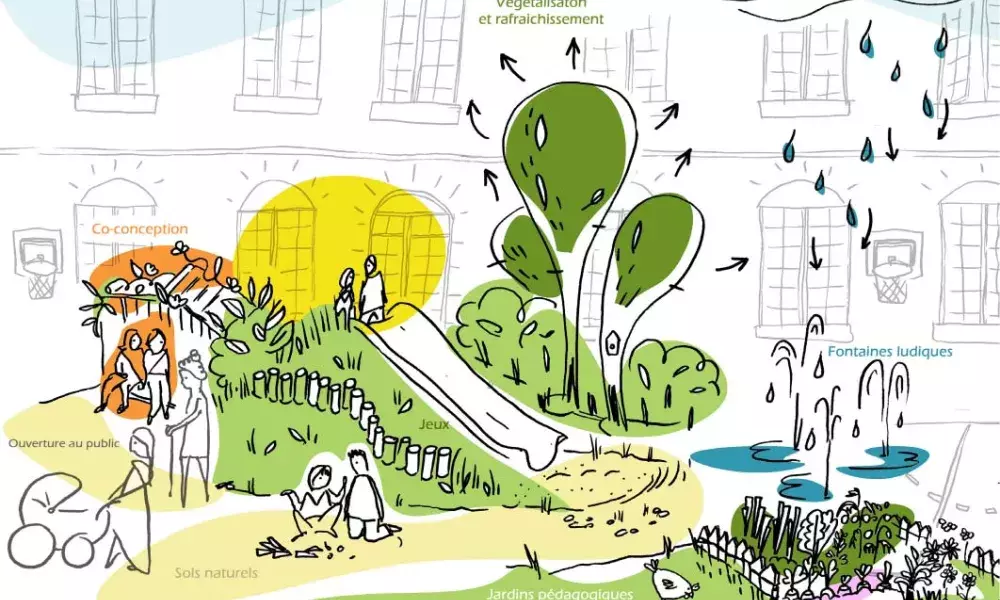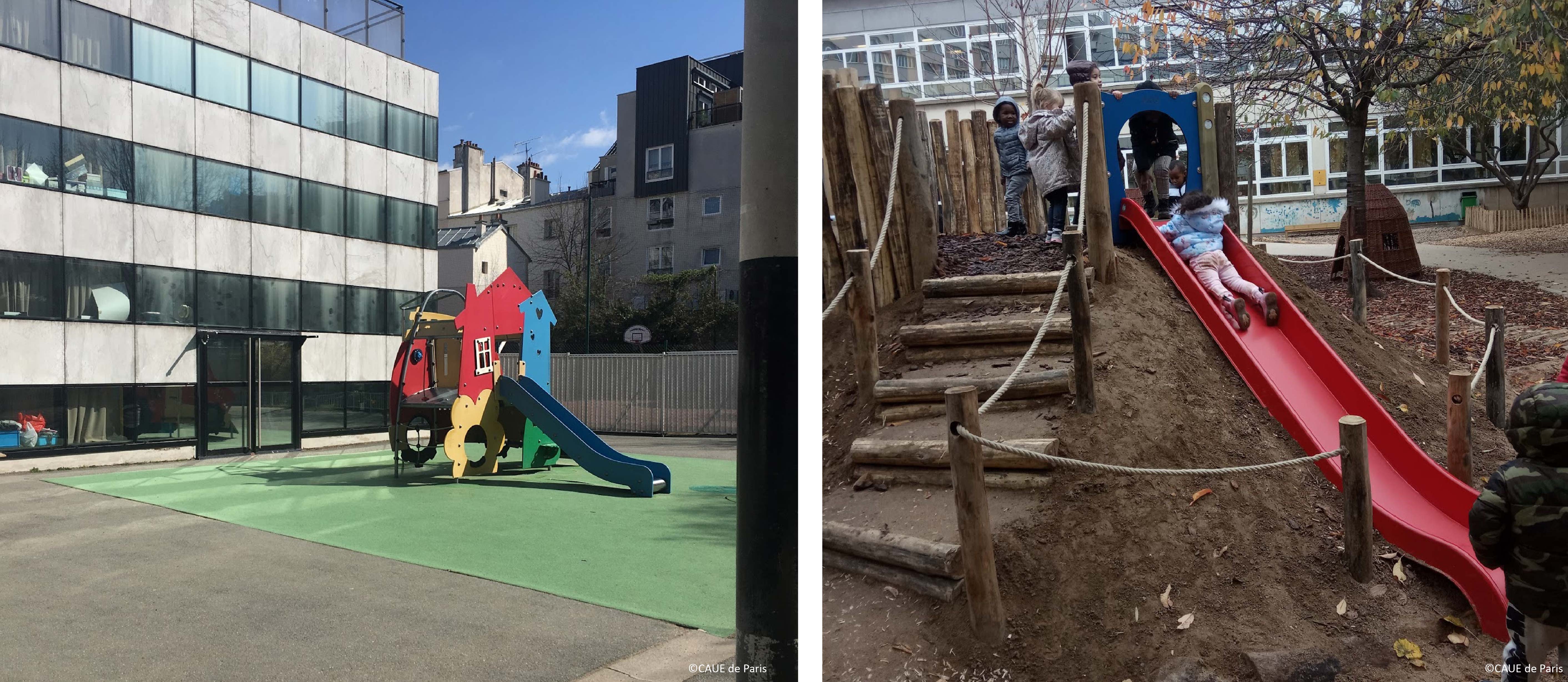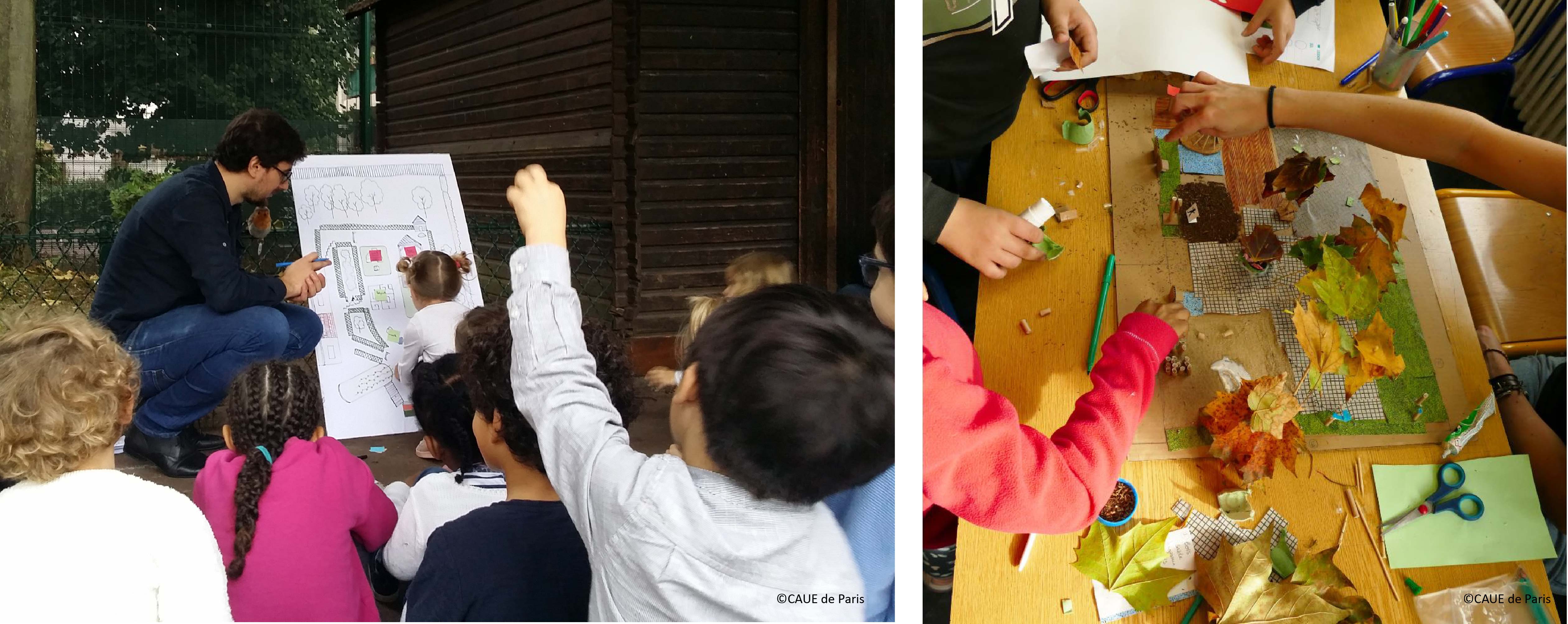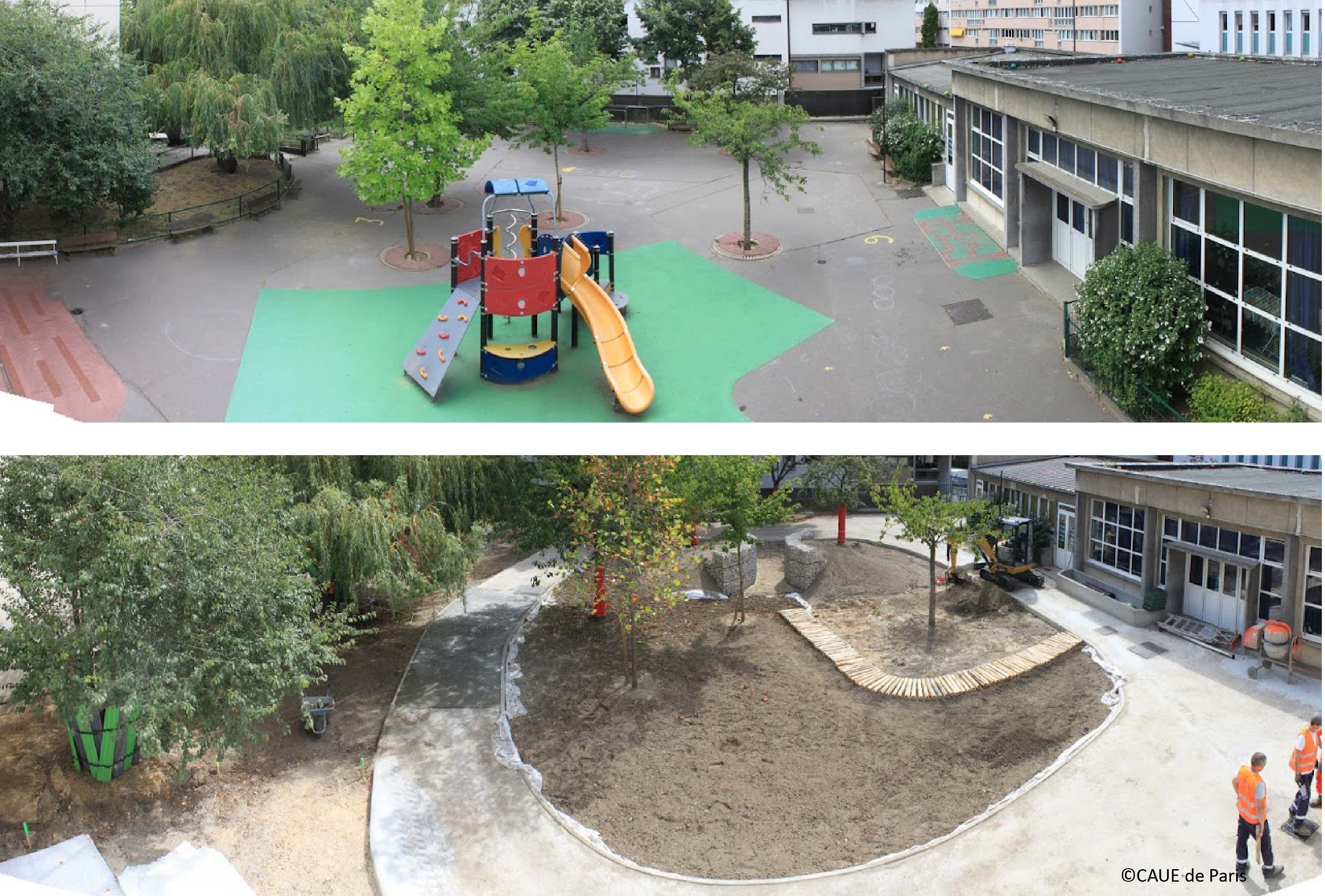Aiming for Healthier Neighborhoods in your city? The OASIS approach is probably what you have been looking for!

How the OASIS Schoolyards promote children’s health and wellbeing
1. Children’s physical health
The OASIS Schoolyards have been designed to accommodate multiple features, such as adventure playgrounds, vegetable gardens, multi-use game areas and climbing walls while also huts and quiet nooks. Therefore, the schoolyards become places that:
- motivate for more physical activity
- encourage contact with nature
- provide cleaner air and comfortable microclimate especially during heatwaves allowing children to stay outdoors for a longer time
- promote healthy diet habits based on the vegetable garden feature and the relevant educational curriculum

2. Children’s balanced development
The OASIS schoolyards are designed to be gender-neutral and polyvalent spaces that:
- foster psychomotor learning
- promote multi-sensoring learning
- facilitate the development of relationships with the surrounding environment
- spark imagination and story telling
- accommodate outdoor learning (see previous web article)
3. Children’s soft skills development
During the OASIS design process, children were involved as the main actors during the co-design phase. The participation process helps children in developing soft skills such as sense of responsibility, sense of ownership, collaboration and working in teams. At the same time, the co-design process in the schoolyard included many experiential learning activities helping children become more aware of climate change and inspiring them to develop habits that ensure a more sustainable way of living.

How the OASIS Schoolyards enhance the quality of life for residents of all ages
Although at first sight, the OASIS project is perceived as a child-oriented initiative, the multiple benefits of these schoolyards go beyond the children’s interest. Considering that the schoolyards are planned to become accessible spaces for all residents after school-hours, read below the ways how the OASIS approach contributes to developing healthy and cohesive local communities.
A major design goal of the OASIS approach is to remove the existing asphalt–covered surface and dedicate 20-30% of the total surface area to green spaces.
This aforementioned goal was fulfilled by the following actions:
- integration of more natural elements
- addition of permeable paving materials
- provision of shaded areas (vegetation or structures)
- provision of drinking water fountains and features for storm-water management

Strengthening neighborhood’s social cohesion by inviting all residents to participate
The OASIS approach provisions a 2-level participatory process for the placemaking plan of the schoolyards. On the 1st level, children are engaged to co-design their schoolyards in order to ensure that their needs and aspirations are accommodated in their everyday outdoor space. On a 2nd level, a multi-step community engagement process is designed to engage and empower the local community to co-decide on uses and activities that can take place in the schoolyard after-school hours. This 2nd level of the participatory process aims to expand the OASIS community from the school to the entire neighborhood. Thus, transforming the schoolyard into the local social hub.
Local residents and stakeholders are invited to actively contribute to the development of a placemaking framework for the schoolyard.
By embracing the entire neighborhood, the OASIS Schoolyard becomes an important amenity in the neighborhood. Every family and not just the pupils attending the OASIS schools can enjoy a quality place for recreation, play and socializing just within a short walk from home.
A climate-adaptive public space for everyone
Paris is experiencing frequent and intense heatwaves every summer, which in turn creates the phenomenon of urban heat island meaning increased temperatures especially in densely built neighborhoods. The OASIS approach introduces the use of low-tech, natural and low environmental impact materials, to transform the schoolyards from asphalt-covered surfaces into “cool islands”. This transformation is anticipated to enhance the overall local microclimate in the neighborhood scale.
A total of 48 schoolyards in Paris are already transformed following the OASIS approach.

Until today, 48 schoolyards are already transformed following the OASIS approach (9 schoolyards are co-funded by the OASIS UIA project), which means that 48 new green "cool islands" have been created in different Parisian neighborhoods and 48 new social hubs* will be created locally.
These new “cool islands” located in the heart of every neighborhood and co-designed with their users, are anticipated to:
- create a vibrant public realm in the neighborhood
- provide a healthy everyday environment for all residents
- respond to climate emergency
- strengthen the social cohesion of the local community.
Consequently, as the ambition of this project is to transform all 770 public schools into OASIS schoolyards by 2050, well it would be fair to say that this effort significantly contributes to the greater vision of the Mayor of Paris, Anne Hidalgo, to implement the 15-min city plan, where all residents enjoy important amenities like parks and recreation activities within a 15-min walk from their homes!
*the OASIS Schoolyards objective to open access to the entire neighborhood has temporarily been postponed due to the covid-19 safety measures.
About this resource
The Urban Innovative Actions (UIA) is a European Union initiative that provided funding to urban areas across Europe to test new and unproven solutions to urban challenges. The initiative had a total ERDF budget of €372 million for 2014-2020.
Similar content




